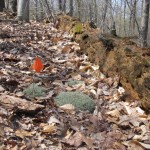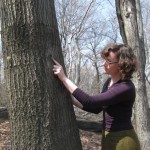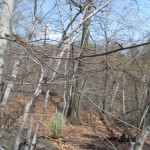Transplants: New Jersey Lichens Find New Home at NYBG
Posted in Interesting Plant Stories on April 30, 2015 by Science Talk
Jessica L. Allen is a graduate student at the Commodore Mathew Perry Graduate Studies Program, and James C. Lendemer, Ph.D., is an Assistant Curator at the Institute of Systematic Botany, both at The New York Botanical Garden. Lichens are their primary research interest.
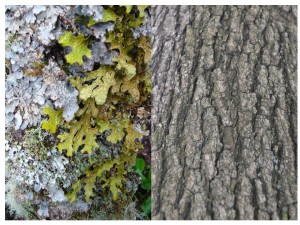
Most trees and rocks in New York City look naked, while trees in wilder parts of the United States wear a vibrant, colorful coat. What causes that? It’s because after centuries of changes to the environment, many lichens have been pushed from our urban or suburban landscapes and into the wilderness.
Lichens are fungi that, in addition to forming beautiful mosaics on trees and rocks, are critical to maintaining healthy environments. Unfortunately they are also extremely sensitive to air pollution and disturbance. That is why if you grew up in New York, and many other cities, you might think that bare trees and rocks are normal.
The good news is that, like the oysters that are slowly returning to New York harbor, there are more lichens in New York City now than there were 30 years ago. Yet there are still hundreds of species that were once found in the metropolitan area and are no longer here. We decided to investigate whether or not more lichens could survive in the city if we just gave them a little help getting here.
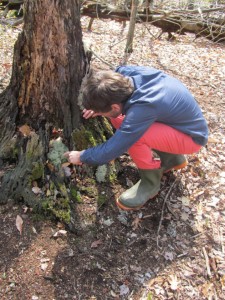
We recently traveled to the Rutgers Pinelands Field Station in southern New Jersey to gather samples of two lichen species that once grew in New York City but haven’t been seen for more than a century: reindeer lichen (Cladonia subtenuis) and old man’s beard (Usnea strigosa). After a two-hour drive back north, we transplanted them to their new home in the Thain Family Forest at The New York Botanical Garden.
We “planted” the reindeer lichen on a tree and branches that had fallen to the forest floor. We also attached the old man’s beard to a tree, but in addition we hung some from fishing line to see if pieces of it that break off will form new colonies.
Has our air quality improved enough for these species to survive? How will they fare in the forest? Stay tuned to find out how they’re “lichen” their new home over the next few months.

